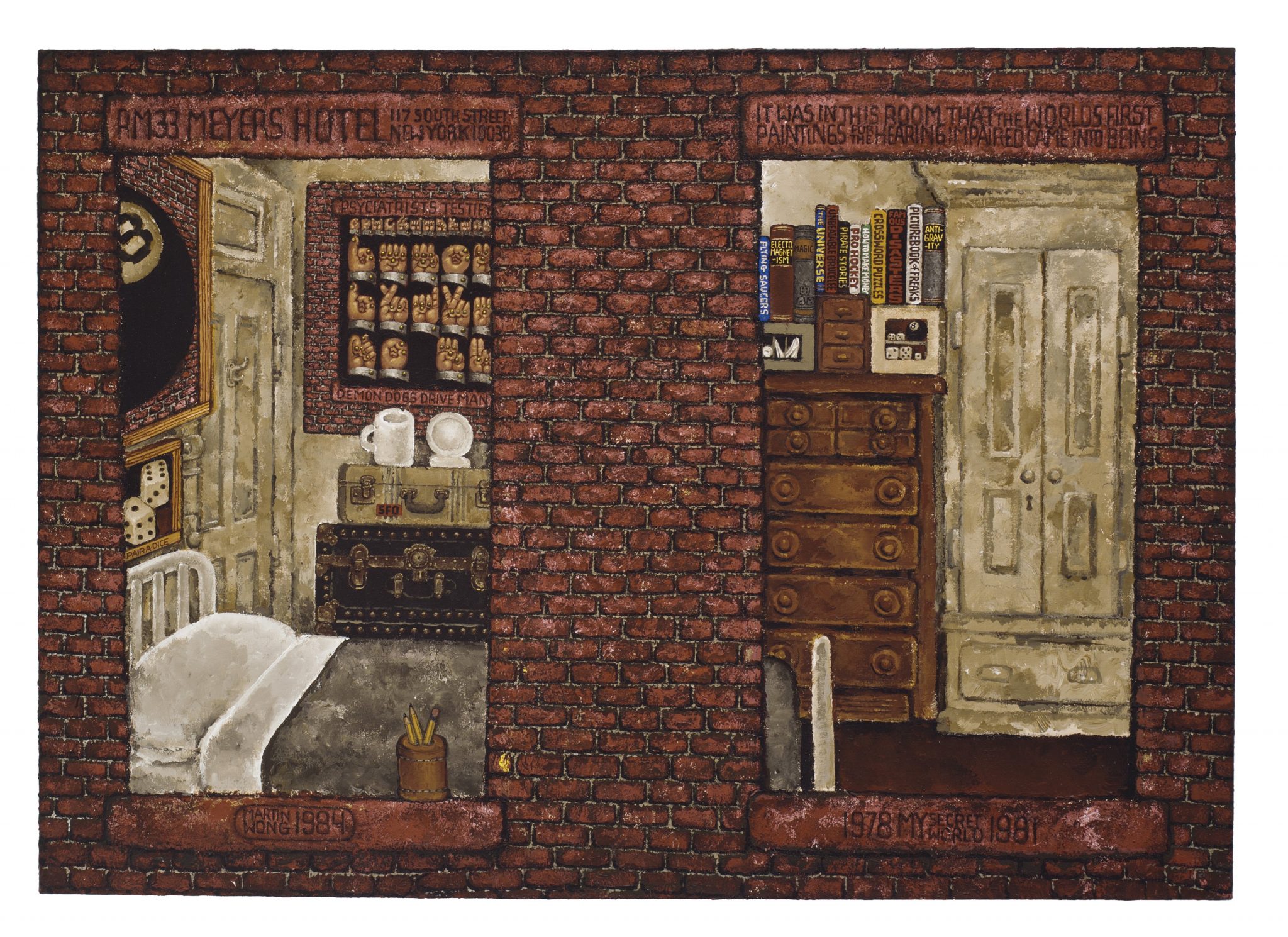The transgressive legacy of the late Chinese-American artist resists his subsequent commodification as a sanitised ‘unsung hero’ of gay art history
Part of the difficulty in summarising Martin Wong’s practice is that he was a chameleonic interlocutor of scenes and cultures: a San Francisco hippy and charismatic dandy; a fabulist, prone to embellishing details of his life story; simultaneously a social-realist and gay fantasist; a Chinese-American whose best-recognised works derive from immersion in New York’s Puerto Rican communities. At London’s Camden Art Centre, a broadly chronological series of six rooms (a seventh room screens American filmmaker Charlie Ahearn’s moving verité portrait of the artist, produced in 1998, the year before Wong died of AIDS) gathers the disparate strands of Wong’s peripatetic practice. It’s a show that builds both on previous iterations in Berlin and Madrid, and which continues the legacy-building work of a number of US museum surveys in the 2010s.

Where the first room introduces some of the artist’s biography and signature thematic concerns in the form of ephemera and early portraits, Malicious Mischief’s second and third rooms see the full flowering of Wong’s densely layered painting style – frequently annotated with handwritten text, drawing on Chinese calligraphic traditions – in which the architectures of inner-cities both real and imagined appear to melt, becoming one with piles of rubble and the horny, furious energies of the bodies that populate them. Their tenor is often stormy: see, for example, the fiery-red distressed Lower East Side of Stripped Trans Am at Avenue C and 5th Street (1984). New York City’s red-brick tenements – their inherent uniformity subverted by Wong’s brush – are a near-constant feature across the three decades of work featured here, continuing through his time in Loisaida (the name given to the Spanish-speaking East Village) to assume increasingly adventurous forms in the late 80s and 90s: say, a huge penis in Orion (1991), or the face of Lady Liberty in Mrs. Liberty Face (1990), which defamiliarise the visual vocabulary of everyday urban America in erotic and discomforting directions.

The exhibition’s centrepiece is a room dedicated to the ‘Prisoners, Policemen, Firemen, and Graffiti Artists’ who were some of Wong’s many subjects, drawing out the fetishistic quality present across his work. While these paintings depict precarious states and relations, Wong is unafraid to lean into kitsch: one shows a prisoner and security officer locked in heated exchange; ‘COME ON OVER HERE ROCK FACE AND SUCK MY DICK’ is scrawled across the canvas’s upper right corner; the exhibition’s titular work is a 1991 painting depicting a correctional officer with his hands in his pants. Penitentiary Fox (1988) commands an entire wall, so as to hold court over the room. Its central figure is Mikey Piñero, a close friend and frequent subject whose multiple lives – revered literary icon of the Nuyorican movement, petty criminal – were worthy of Wong’s. Friends and scholars have scoffed at attempts to recast Wong as a commodifiable ‘unsung hero’ of gay art history, and the seediness of these works is certainly refreshing, in an era in which the field of gay figuration is dominated by a sanitised, market-friendly style worlds away from the danger and transgression in these works.

Another prominent figure is Wong’s mother, Florence Wong Fie, an amateur landscape painter. She is depicted directly twice, in Chinese Laundry, a Portrait of the Artist’s Parents (1984) and a moving photograph taken at the opening of Wong’s Chinatown USA exhibition in 1993. Wong died in the last year of the millennium, in Florence’s care, in the Bay Area where he made his name in the dying days of the 1960s counterculture, as a collaborator of experimental performance troupes The Cockettes and Angels of Light. (Though it’s difficult to take umbrage with the show’s satisfying articulation of Wong’s shapeshifting practice, I would have appreciated more insight into this early design work, as well as his poetry and work in different media generally.)
The only work featured from Wong’s latest years is an unlikely portrait of Patty Hearst. This familiar symbol of corrupted Americana (the heir to the Hearst media dynasty was kidnapped and apparently indoctrinated by a militant guerrilla group in 1974) appears as a blue-skinned, half-serpent goddess, shotgun in hand, with the words ‘Did I Ever Have a Chance?’ painted above her; a choral arrangement of cartoon bunnies and skulls line the canvas’s lower edge. It is a fittingly ambiguous and provocative coda. If all attempts at neatly historicising the promiscuous, itinerant life’s work of Martin Wong are doomed to failure, Malicious Mischief gets satisfyingly close, while allowing myriad versions of the artist to co-exist, in all their enigmatic indelicacies.
Dylan Huw is a writer and curator living in Cardiff, Wales
Malicious Mischief at Camden Art Centre, London, through 17 September
